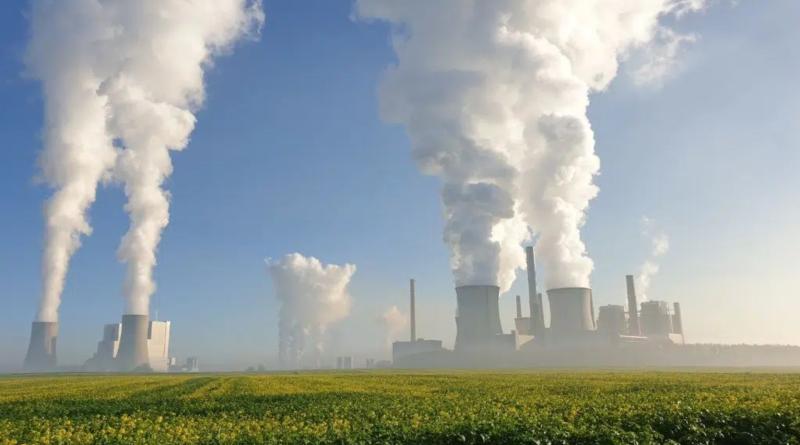What Are Carbon Offsets and How Do They Work

Carbon offsets are selling like hotcakes. But do they really support meaningful climate action? So what are carbon offsets and how does carbon offsetting work?
Rapid climate action is needed if we are to avoid runaway climate change. Faced with the difficulty of making quick emission cuts, many companies are turning to carbon offsets as part of their climate strategy. Yet in the environmentalist community, carbon offsets are far from garnering unanimous support – they are even sometimes accused of hindering climate action. So what are carbon offsets exactly? Do they do what they are intended to do, and most importantly, are they an ally in the fight against climate change?
What Are Carbon Offsets and What Are They For?
When carbon dioxide is released into the atmosphere, its climate impact can be cancelled out by absorbing equal amounts of carbon from the atmosphere. Organisations and individuals can thus compensate for the climate impact of their greenhouse gas emissions by supporting projects that reduce or store carbon emissions.
If you’ve ever purchased a flight and paid a little extra to compensate for your emissions, you’ve purchased an offset. A well-known example is planting trees: trees absorb and store carbon dioxide from the air as they grow. But greenhouse gas emissions can also be offset in myriad other ways. Supporting wind or solar power projects, promoting farming methods that store carbon into the soil, avoiding deforestation, or using technology to capture and store carbon from the air are just a few examples of offset projects.
Companies and individuals purchase carbon offsets to help mitigate their greenhouse gas emissions and thus their contribution to climate change. Many businesses purchase offsets as part of a genuine commitment to fight global warming. But increasingly, companies also do so because it is good for business: credible climate action plans are becoming a licence to operate, and offsets can support those plans. Companies that offset all their emissions (thus theoretically having no impact on the climate) can thus promote themselves as “climate neutral” to their sustainability-minded customers, investors and other stakeholders.
Although managing emissions is the main reason to use offsets, it is not the only one. Most carbon offset projects come with a variety of co-benefits beyond keeping carbon out of the atmosphere: they can also help with other environmental issues and support local communities. Let’s take the example of a project that distributes efficient cookstoves in poor rural communities in Ghana. These cookstoves run on less wood, thus generating fewer carbon emissions than the stoves that would normally be used. The cookstoves also allow poor rural families to spend less money on fuel and less time gathering wood, thus alleviating poverty and freeing up time for other important activities like education or paid work. Moreover, the stoves reduce indoor air pollution, which positively impacts families’ health. So purchasing offsets helps to combat climate change, but can also help other important causes and contribute to the United Nations Sustainable Development Goals (SDGs), which many companies have pledged to champion.
Does Offsetting Really Deliver Carbon Benefits?
When people purchase an offset, the project usually takes place far away from them, making it difficult to ensure that the project’s promised actions are being effectively implemented. To resolve this issue, a number of standards (like the Verified Carbon Standard or the Gold Standard) and registries have been developed to ensure that projects meet conditions to be classified as offsets and perform as predicted during project design.
Obviously, it is important for carbon offset projects to be effective at keeping carbon out of the atmosphere. But this isn’t enough; to truly combat climate change, offset projects must provide additionality, i.e. carbon savings that could only have happened through the project. To use the cookstove example again, the project managers must demonstrate additionality by proving that if the project hadn’t existed, the cookstove recipients would not have gotten another efficient cookstove by some other means, for example through government handouts. Additionality can be demonstrated with a reasonable degree of confidence, but because it is impossible to know what would have happened without the project, total certainty does not exist. To palliate this, some providers offer offset guarantees: if an offset project turns out not to deliver as promised, or turns out to be non-additional, the guarantee will support a different project to make up for losses. In brief, offsets do provide carbon benefits, although outcomes may not always be 100% certain unless they are purchased with a guarantee.
If Offsets Help Fight Climate Change, Why Are They Controversial?
Environmentalists argue that offsets don’t solve the root of the emissions problem. As Swetha Sekhar of Ecolytics argues, “if your bathtub was overflowing, you wouldn’t first grab a mop. You would turn off the tap”. This common metaphor is used to point out that to address climate change, the priority should be to stop the steady flow of greenhouse gases into the atmosphere, not to soak them up with offsets. Even worse, using offsets to neutralise one’s carbon emissions while not making any attempt to prevent them from being generated in the first place creates the dangerous illusion that the emission problem is “fixed”. This encourages companies to continue business as usual instead of making some urgently needed emission cuts.
These points are all very valid – yet they don’t make offsets worthless. Companies can’t just switch off emissions: decarbonisation is a journey. To carry on with the bathtub metaphor, in real life the tap is rusty; turning it off is not easy, and it takes time. Whether offsets constitute valid climate action depends on whether the bather is actively trying to turn off the tap, or isn’t even bothering. Businesses that implement credible climate action first do as much as they can to reduce their carbon emissions, gradually turning off that tap. Once this process is in place, they use offsetting as a last-resort solution to mop up the impact of unavoidable emissions. Reducing emissions can take time; offsets offer an interim solution for companies that don’t want to contribute to climate change during their transition to low-carbon. In that sense, offsets can help to speed up climate action.
Admittedly, nothing prevents companies from using offsets as their only climate strategy (in the bathtub metaphor, the equivalent of not bothering with the tap at all). Companies that offset all their emissions can call themselves climate neutral. Although in spirit, climate neutrality is about reducing emissions, what the term technically means is that companies offset as many emissions as they generate. Controversially, some companies do use this technicality as a loophole to continue emitting as much as usual, offset all their emissions, then tout their climate neutral status to market themselves as climate champions. This strategy distracts from the more important need to cut the company’s emissions, placing it firmly in greenwashing territory (although, arguably, this still beats doing nothing).
Fortunately, the behaviour described above tends to be the exception rather than the rule. Offsets are usually part of a broader strategy to reduce emissions. Companies that use offsets tend to do more to reduce their emissions. Companies are increasingly expected to have a decarbonisation strategy with a credible plan to reduce emissions, not just at the company but throughout its value chain. Many are aiming higher than just climate neutrality, setting net zero or science-based targets that aim to reduce emissions enough to limit global warming to 2C above pre-industrial temperatures (the goal set out in the Paris Agreement). Credible certifying bodies like SBTi or myFootprint will not award businesses a certification unless they have and implement a clear action plan to generate significantly less carbon in the future. In a nutshell, offsets are not a valid way to fight climate change if they are used alone. However, they can be a valuable addition to an emissions reduction plan, especially if the offset project also has co-benefits beyond its climate impacts.
Because of the optical illusion that offsets can create around genuine emissions reduction, and the uncertainty surrounding their outcome, offsets have sparked a fair amount of controversy in the climate community. As UN Environment Programme puts it, offsets are not a get-out-of-jail-free card; they should never be a substitute to cutting emissions. Nevertheless, in the context of a solid decarbonisation plan that includes meaningful emission reductions, offsets can be a great tool to support and even accelerate climate action. Offsets have been criticised for their potential to slow climate efforts, but one could also argue the opposite: that their accessibility could help mainstream and normalise climate action in the business world, ultimately serving as a gateway to meaningful emission cuts. So are carbon offsets the villain or the hero of the climate story? Only time will tell.




